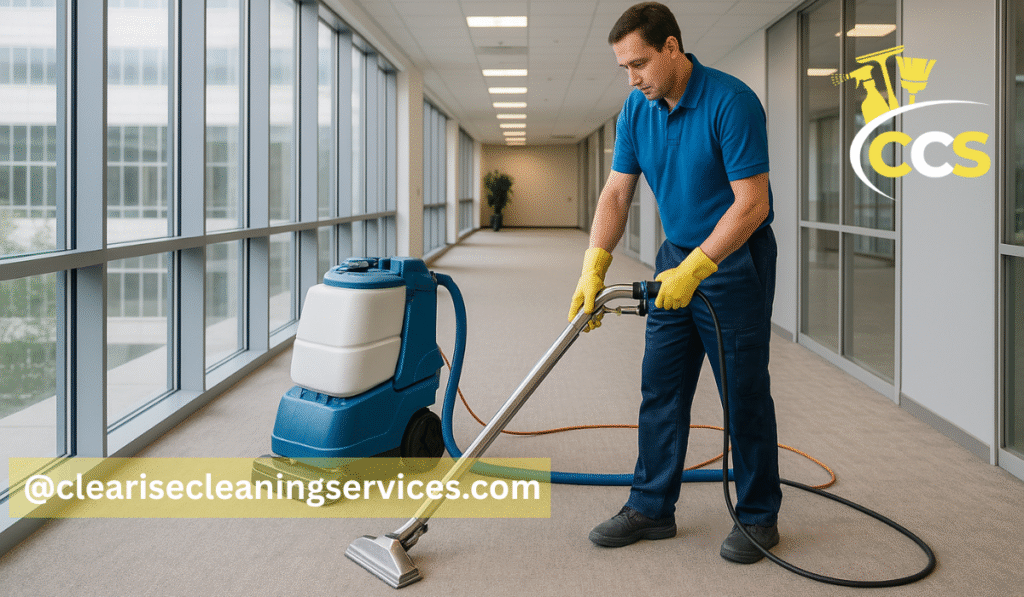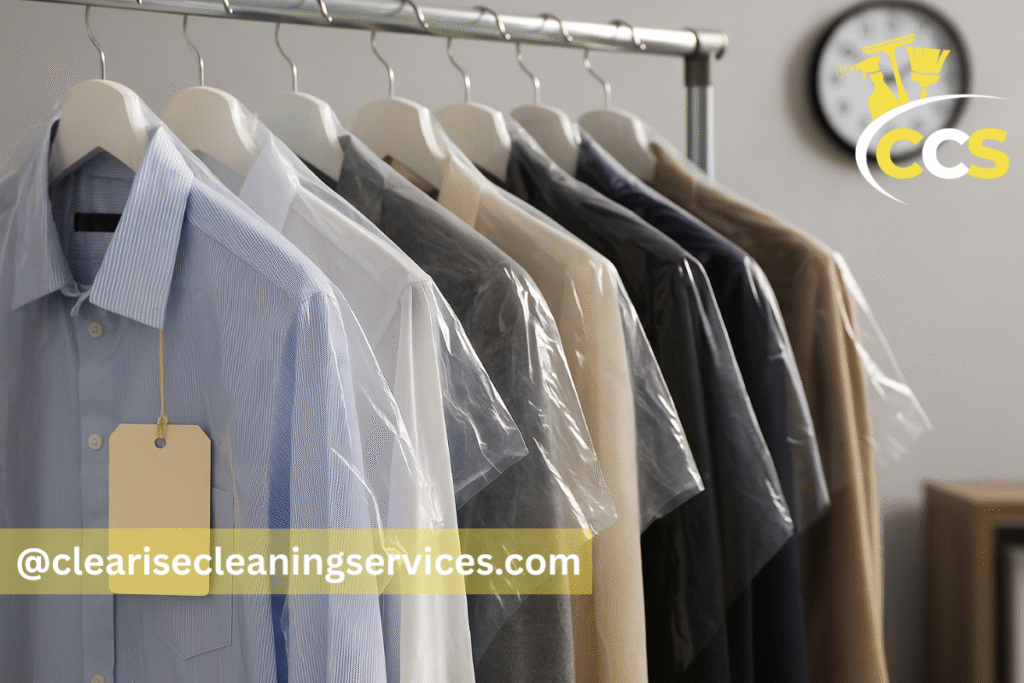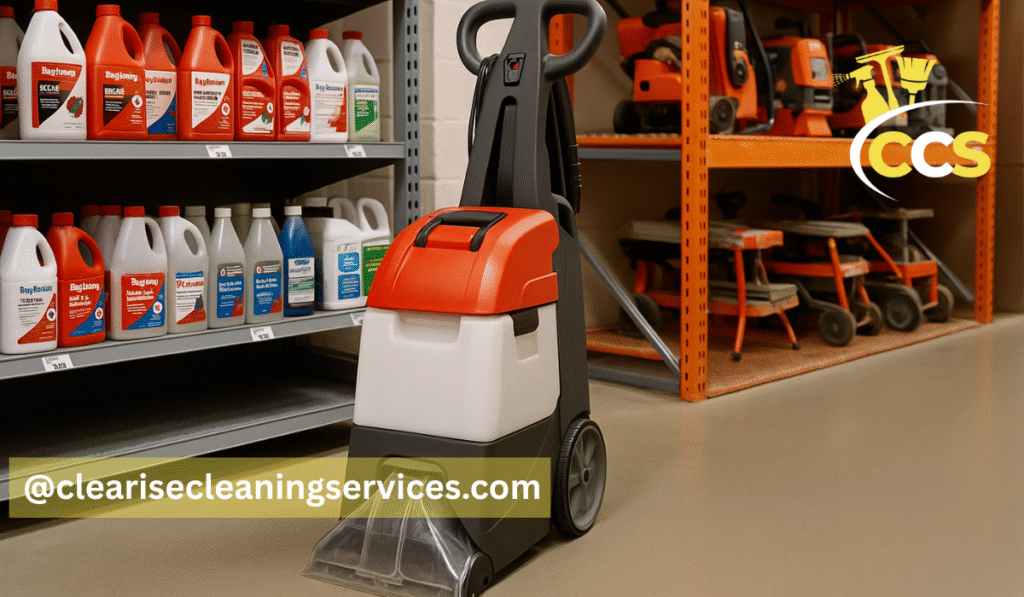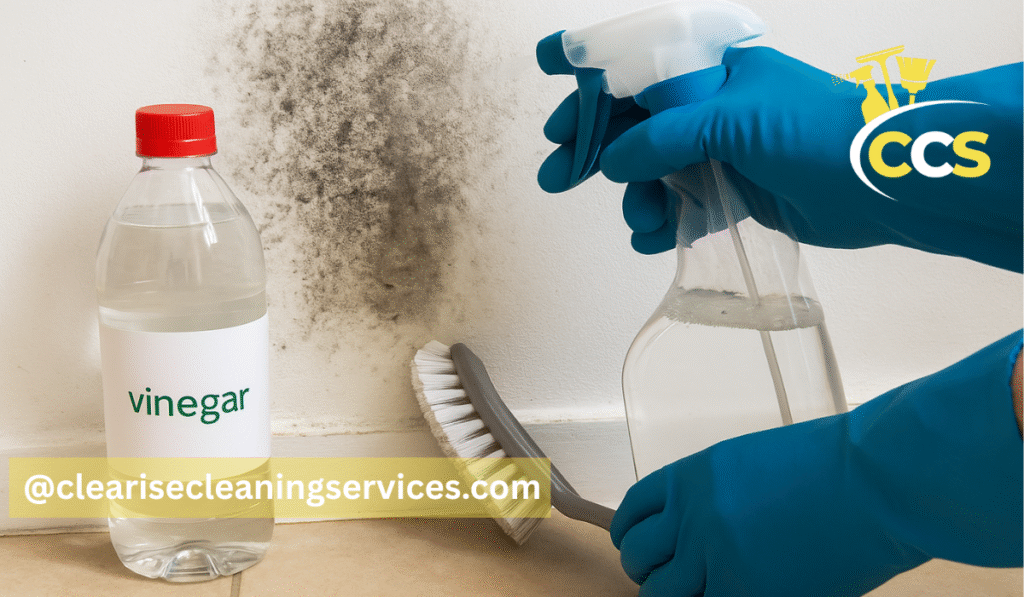Every day, thousands of people walk through offices, hospitals, schools, and shopping malls. What most don’t realize is that the cleanliness of these spaces plays a huge role in health, safety, and even reputation. A spotless lobby or a disinfected hospital wing not only creates a positive impression but also protects public well-being.
So, what is commercial cleaning? In simple terms, it refers to professional cleaning services designed for businesses, organizations, and large facilities. Unlike everyday household cleaning, it uses specialized equipment, trained staff, and structured processes to keep commercial environments hygienic and presentable.
Understanding this is important for everyone—from business owners and facility managers who need reliable cleaning partners, to job-seekers exploring careers in this growing industry.
In this guide, we’ll explore the full scope of commercial cleaning: the types of services offered, how it differs from residential cleaning, the processes and tools used, salary insights, industry trends, and expert tips that make a real difference.
Understanding the Basics
What Is Commercial Cleaning?
Commercial cleaning is the professional process of keeping business and public spaces clean, safe, and presentable. Unlike simple housekeeping, it covers large areas and requires specialized skills, equipment, and scheduling.
Its scope is broad—ranging from offices and retail stores to hospitals, hotels, schools, industrial facilities, and public buildings. Each environment demands a tailored approach. For example, hospitals require strict disinfection protocols, while shopping centers focus more on appearance and hygiene in high-traffic areas.
It’s also important to distinguish commercial cleaning from other categories:
- Residential cleaning: Focused on homes, apartments, and private spaces with lighter equipment and flexible tasks.
- Industrial cleaning: Heavy-duty cleaning in factories, warehouses, or plants, often involving hazardous materials and stricter safety regulations.
Commercial cleaning sits between these—more complex than residential, but not as specialized as full industrial work.
Why Commercial Cleaning Is Different from Residential Cleaning
At first glance, commercial and residential cleaning may look similar, but there are clear differences that matter for both clients and professionals:
- Scale and Volume: Commercial spaces are much larger, requiring teams of cleaners, multiple machines, and structured schedules.
- Time & Scheduling: Businesses often need cleaning at night, early morning, or weekends to avoid disrupting daily operations.
- Equipment & Chemicals: Commercial cleaning uses industrial-grade vacuums, scrubbers, and disinfectants—far more powerful than consumer products. This ensures efficiency and compliance with hygiene standards.
- Regulatory Demands: Workplaces, healthcare facilities, and schools often have strict cleaning protocols tied to health and safety laws.
- Performance Metrics: Unlike residential cleaning, commercial contracts often include service level agreements (SLAs), measurable outcomes, and regular inspections to maintain standards.
In short, commercial cleaning isn’t just about tidying up—it’s about delivering consistent, professional results while meeting health, safety, and business requirements.
Subtypes / Categories of Commercial Cleaning
The term “commercial cleaning” covers a wide range of specialized services. Here are the main categories:
- Janitorial Cleaning – Daily or routine cleaning tasks such as dusting, trash removal, restroom cleaning, and restocking supplies.
- Floor Care – Stripping, waxing, polishing, and buffing hard surfaces like tile, vinyl, or marble.
- Carpet and Upholstery Cleaning – Deep cleaning methods like hot water extraction, shampooing, or dry cleaning to extend fabric life.
- Window & Façade Cleaning – Interior and exterior glass cleaning, sometimes requiring high-rise safety methods.
- Deep Cleaning / Disinfection – Intensive sanitation of high-touch areas, using advanced techniques like electrostatic spraying.
- Specialty Cleaning – Services for unique environments such as cleanrooms, post-construction sites, or hazardous material areas.
- Green / Sustainable Cleaning – Eco-friendly cleaning with biodegradable products and reduced chemical use.
- Day Porter / On-Demand Services – Staff available during business hours for constant upkeep in high-traffic buildings.
Each subtype serves a distinct purpose, and most professional cleaning companies offer a mix of these services depending on client needs.
Commercial Cleaning Services in Detail
Core Janitorial / Routine Services
Janitorial cleaning is the foundation of commercial cleaning. These are the everyday tasks that keep a workplace looking tidy and professional:
- Dusting, sweeping, vacuuming, and mopping to maintain floors and surfaces.
- Trash removal and recycling to prevent odor and clutter.
- Restroom sanitation and restocking to ensure hygiene and comfort for employees and visitors.
- Cleaning common spaces like lobbies, corridors, and breakrooms where traffic is highest.
- Glass, mirrors, and interior windows kept spotless to give a polished look.
These routine services may seem basic, but when done consistently and professionally, they create a safe and welcoming environment for both staff and clients.
Deep Cleaning, Disinfection & Sanitization
Deep cleaning goes beyond daily upkeep. It focuses on removing built-up dirt, germs, and hidden contaminants.
- Difference vs. regular cleaning: Regular cleaning removes visible dust and dirt, while deep cleaning targets bacteria, viruses, and hard-to-reach areas.
- Hospital-grade disinfectants, fogging, and electrostatic spraying are often used, especially in healthcare or during outbreaks.
- Frequency and triggers: Businesses often schedule deep cleans during flu season, after construction, or following exposure to illness.
- High-touch surfaces like doorknobs, light switches, desks, and elevator buttons are prioritized, as these areas spread germs the fastest.
This type of service has become even more essential since the COVID-19 pandemic, with companies now viewing disinfection as part of their long-term hygiene strategy.
Floor, Carpet & Surface Care
Floors and carpets take the most wear and tear in any facility, which is why they need specialized care.
- Types of flooring: Vinyl, tile, terrazzo, hardwood, and concrete each require unique cleaning methods.
- Methods: Buffing for shine, stripping to remove old finish, sealing to protect surfaces, and polishing for a professional look.
- Carpet cleaning: Options include steam cleaning (hot water extraction), shampooing, and dry cleaning, each chosen based on the carpet’s material and level of dirt.
- Upholstery and fabric care: Office chairs, sofas, and curtains are often overlooked but benefit from periodic deep cleaning to remove stains and allergens.
This service not only improves appearance but also extends the lifespan of flooring and furnishings.
Window, Glass & Façade Cleaning
Windows are often the first thing visitors notice when entering a building. Dirty or streaky glass leaves a poor impression.
- Interior vs. exterior glass: Both need regular attention, though exterior windows face more dirt from weather and pollution.
- High-rise cleaning: Specialized equipment and safety protocols are required for tall buildings, including harnesses and water-fed poles.
- Façade cleaning: Pressure washing can be used to remove grime, stains, or graffiti from building exteriors, improving curb appeal.
Professional glass cleaning ensures clarity, brightness, and a more professional image for the business.
Specialty & Niche Services
Some industries need highly specialized cleaning services beyond routine janitorial work.
- Post-construction cleaning: Removing dust, paint splatters, and debris after building projects.
- Cleanrooms & controlled environments: Used in laboratories, tech facilities, and medical spaces, where contamination must be near zero.
- Biohazard and mold remediation: Requires certified professionals to safely remove dangerous materials.
- Industrial cleaning: For factories, warehouses, and heavy equipment, often using stronger chemicals and advanced machinery.
- Food-service / kitchen deep cleans: Commercial kitchens need grease removal, hood cleaning, and sanitization to meet safety standards.
- HVAC duct cleaning: Improves air quality and energy efficiency by removing dust, mold, and allergens.
These services are critical for businesses where safety, compliance, and precision are non-negotiable.
Optional / Add-on Services
Many cleaning companies also offer extra services that businesses can request as needed:
- Floor waxing and sealing for long-lasting protection.
- Graffiti removal to restore property appearance quickly.
- Pressure washing exteriors for sidewalks, parking lots, and building walls.
- Ceiling and duct dusting to maintain indoor air quality.
- Pest control coordination when cleanliness issues attract insects or rodents.
- Waste disposal and recycling programs to help businesses meet sustainability goals.
These add-ons allow companies to customize their cleaning contracts and cover all aspects of facility maintenance.
The Commercial Cleaning Process & Workflow
Commercial cleaning is more than just showing up with mops and vacuums. Professional providers follow a structured process to deliver consistent, high-quality results.
Client Onboarding & Assessment
The process begins with understanding the client’s needs:
- Site inspection & audit – A walkthrough of the facility helps identify high-traffic areas, delicate surfaces, and special requirements.
- Defining scope, frequency, and hours – Some businesses need daily janitorial services, while others prefer weekly or monthly deep cleans. Hours are often set around business schedules to avoid disruption.
- Risk assessment & compliance – Healthcare, food, and industrial sites may require adherence to strict hygiene and safety standards.
- Proposal / contract drafting – A customized plan is created, outlining tasks, costs, and performance expectations.
This stage ensures both client and provider are aligned before work begins.
Scheduling & Staffing
Once the contract is in place, careful planning ensures smooth operations:
- Shift planning – Most commercial cleaning happens after hours, at night, or on weekends.
- Staff allocation & route optimization – Teams are assigned based on the size and layout of the facility, ensuring efficiency.
- Backup planning – Reliable providers plan for holidays, emergencies, and absenteeism so services continue without interruption.
A well-organized schedule keeps cleaning consistent and dependable.
Standard Operating Procedures (SOPs)
Professional cleaners follow detailed SOPs to maintain quality:
- Cleaning checklists & sequences – Ensures no area is overlooked and tasks are done in the right order.
- Quality control inspections – Supervisors or managers perform spot checks for consistency.
- Safety protocols – Use of PPE, safe chemical handling, and ladder safety training are standard.
- Green cleaning modifications – Many businesses now request eco-friendly SOPs that reduce chemical use without sacrificing cleanliness.
SOPs create accountability and repeatable results, no matter who is on shift.
Equipment & Supplies Management
Behind the scenes, equipment and products make a huge difference:
- Types of equipment – Autoscrubbers, vacuums, floor buffers, and pressure washers for different surfaces.
- Chemical selection & dilution control – Using the right product in the correct concentration avoids damage and maximizes safety.
- Inventory & storage – Supplies are carefully stocked and stored to ensure cleaners have what they need when they need it.
Efficient supply management reduces downtime and prevents errors.
Execution & Quality Assurance
The actual cleaning phase follows the established plan:
- Efficient crew performance – Teams use proven techniques to complete tasks on time.
- Supervisory checks & proof-of-service tools – Many companies now use digital apps or photos to confirm work is done.
- Client feedback loops – Regular communication ensures adjustments can be made quickly.
- Continuous improvement – Issues are tracked and used to improve future performance.
This step ensures cleaning isn’t just done—it’s done well.
Reporting, Metrics & KPIs
Transparency is a hallmark of professional cleaning companies:
- KPIs – Metrics like number of complaints, rework rate, or cleaning time per square foot help measure performance.
- Cleaning verification – Photos, QR code check-ins, or mobile apps provide real-time proof of service.
- Client reports – Monthly or quarterly summaries build trust by showing results, not just promises.
These systems help clients see value and ensure providers stay accountable.
Commercial Cleaning vs Residential Cleaning (Comparison)
Many people assume that cleaning a home and cleaning a business are the same. In reality, they are quite different in scope, structure, and expectations. Here’s how they compare:
Differences in Scope, Contract & Process
- Residential cleaning usually covers smaller spaces like homes or apartments. Tasks often include vacuuming, dusting, bathroom cleaning, and kitchen maintenance.
- Commercial cleaning covers larger, high-traffic areas such as offices, schools, hospitals, and retail stores. The process is more structured, with written contracts, defined schedules, and specialized methods.
- Unlike residential cleaning, commercial services often require compliance with industry standards (e.g., healthcare sanitation, OSHA safety rules).
Price Models & Billing Structures
The way services are priced also differs:
- Per square foot – Common in commercial contracts, where pricing is based on facility size.
- Hourly rates – More typical for residential cleaning, though sometimes used in smaller offices.
- Flat contracts – Many businesses prefer fixed monthly or annual contracts for predictable costs.
- Add-ons & premium services – Extra tasks such as carpet shampooing, window cleaning, or deep disinfection can be billed separately.
- Surge pricing – During emergencies or special events, commercial cleaning rates may increase due to higher demand or urgency.
Client Expectations & Relationship Management
- Residential clients often expect a personal touch—cleaners may customize services to suit the family’s needs and schedule. Flexibility is key.
- Commercial clients prioritize measurable outcomes, reliability, and adherence to strict service-level agreements (SLAs). Consistency, efficiency, and compliance are more important than personal relationships.
Workforce & Skills Requirements
- Residential cleaning can often be performed by individuals or small teams without formal training.
- Commercial cleaning requires staff who are trained to use industrial equipment, handle chemicals safely, and work unusual hours (nights, weekends, or early mornings). Specialized environments like hospitals or factories also require certification and safety knowledge.
Careers, Roles & Organizational Structure
The commercial cleaning industry doesn’t just create clean spaces—it also provides stable jobs and career growth opportunities for thousands of workers worldwide. From entry-level cleaners to operations managers, the industry offers a wide range of roles.
Job Titles & Roles
- Janitor / Cleaner / Custodial Staff – Frontline workers responsible for daily cleaning tasks like sweeping, mopping, and restroom sanitation.
- Lead Cleaner / Crew Supervisor – Oversees teams, ensures tasks are completed on schedule, and acts as a bridge between staff and management.
- Quality Auditor / Inspector – Conducts inspections, checks adherence to service-level agreements (SLAs), and ensures consistent standards.
- Operations Manager / Contract Manager – Manages large accounts, scheduling, and staffing, while ensuring client satisfaction.
- Sales / Business Development Roles – Focuses on bringing in new contracts and expanding services with existing clients.
- Safety, Compliance, and Training Roles – Specialists who train staff on chemical handling, workplace safety, and regulatory compliance.
Job Descriptions & Required Skills
Each role requires specific skills and responsibilities:
- Responsibilities – Cleaners handle daily tasks, supervisors coordinate teams, managers handle logistics and client relations.
- Experience Levels – Entry-level positions may require little experience, while managerial roles often demand years of field knowledge.
- Soft Skills – Attention to detail, reliability, teamwork, and time management are critical.
- Certifications – Workers may pursue training in OSHA standards, safety practices, or green cleaning methods to enhance credibility and opportunities.
Commercial Cleaner Salary & Compensation Insights
Salaries in commercial cleaning vary widely depending on the role, region, and complexity of work:
- Global / U.S. averages – Entry-level janitors in the U.S. typically earn between $12–$18 per hour, while supervisors and managers can make $40,000–$70,000 annually.
- Wage Factors – Pay depends on location (urban vs. rural), shift timing (overnight often pays more), and specialized contracts (like hospitals or labs).
- Incentives & Benefits – Some companies offer performance bonuses, healthcare, and retirement plans to attract and retain staff.
This mix of stability and upward mobility makes commercial cleaning an appealing option for many job-seekers.
Career Growth & Upskill Paths
The industry offers strong growth potential for motivated workers:
- Cross-training – Learning multiple cleaning methods (carpet, window, industrial) increases value and flexibility.
- Advancement – Cleaners can move into supervision, operations, or management roles with experience.
- Certifications & Credentials – Specialized training (biohazard, green cleaning, safety compliance) enhances employability.
- Entrepreneurship – Many experienced professionals eventually start their own cleaning businesses, using industry knowledge to build client networks.
Commercial Cleaning Business & Profitability
Commercial cleaning is not just a service industry—it’s also a fast-growing business sector. With steady demand from offices, healthcare facilities, schools, and industrial clients, it has become an attractive field for entrepreneurs and investors.
Market Size, Trends & Industry Outlook 2025
- Market growth projections – The global cleaning services industry is expected to surpass hundreds of billions in value by 2025, driven by higher hygiene standards and rising outsourcing trends.
- Industry size – In the U.S. alone, commercial cleaning generates billions annually, with office and healthcare facilities being the largest contributors.
- Emerging trends – The industry is shifting toward:
- Robotics & automation – Robotic vacuums, floor scrubbers, and AI-powered cleaning tools.
- IoT integration – Smart sensors tracking restroom supply levels and cleaning needs.
- Green cleaning – Eco-friendly chemicals, water-saving equipment, and sustainable practices.
Revenue Models & Pricing Strategies
Commercial cleaning companies often use flexible pricing to match different client needs:
- Contract cleaning – Fixed-term agreements with recurring services.
- Retainer-based contracts – Monthly fees for ongoing, predictable services.
- Per-job pricing – Used for one-off tasks such as post-construction cleanup.
- Subscription plans – Growing trend where clients pay for a set bundle of services.
- Upselling add-ons – Extra services like window washing or carpet cleaning boost revenue.
- Bundling & tiered packages – Offering basic, standard, and premium levels of service.
Cost Structure & Major Expenses
Running a commercial cleaning company requires careful cost management:
- Labor & wages – The largest expense, often making up more than 50% of total costs.
- Equipment, maintenance & depreciation – Autoscrubbers, vacuums, and floor buffers need upkeep and replacement.
- Chemicals & consumables – Cleaning solutions, disinfectants, paper products, and PPE.
- Insurance & compliance – Liability insurance, worker’s comp, and industry certifications.
- Transport & overhead – Fuel, vehicles, office rent, and management salaries.
Profitability Benchmarks & Margins
- Typical net margins – Many cleaning businesses operate with margins between 10% and 25%, depending on scale and efficiency.
- Break-even calculations – Success often depends on building a stable client base that covers labor and fixed costs.
- Examples from real firms – Smaller firms may earn modest profits but have potential for rapid growth if they secure large contracts with offices, hospitals, or government buildings.
Challenges, Risks & Mitigation
Like any service business, commercial cleaning has risks:
- Labor turnover & retention – High turnover requires continuous hiring and training.
- Variable costs – Fluctuations in fuel, supplies, or chemical prices can reduce profits.
- Contract disputes & complaints – Clear SLAs and communication reduce conflicts.
- Regulatory & liability risk – Accidents, chemical misuse, or OSHA violations can be costly.
- Client retention & pricing pressure – Competing on price alone is risky; reputation and quality matter more.
Mitigation strategies include offering staff incentives, investing in safety training, and diversifying revenue streams.
Growth Strategies & Scaling
Successful cleaning businesses focus on expansion and differentiation:
- Diversification of services – Adding specialty services like biohazard cleaning or HVAC duct cleaning.
- Geographic expansion – Entering new cities or regions to increase market share.
- Technology adoption – Using dispatch systems, CRM software, and IoT-enabled tools to improve efficiency.
- Strategic partnerships – Collaborating with property managers, facility services firms, or construction companies.
- Brand positioning & reputation – A strong reputation for reliability and eco-friendly practices attracts long-term clients.
Expert Tips, Hacks & Uncommon Insights
Commercial cleaning is competitive, but experts use proven strategies to stand out:
- Pitch green / “healthy building” cleaning – Clients increasingly want eco-friendly services. Offering non-toxic products and energy-efficient equipment can win contracts.
- Seasonal scheduling & bundling – Position deep cleaning in flu season, floor care in winter, or window cleaning in spring as seasonal packages.
- Automation, robotics & sensors – Robotic scrubbers, IoT soap dispensers, and occupancy sensors can cut costs while ensuring consistent hygiene.
- Micro-deliverables – Break tasks into daily, weekly, and monthly services so clients see measurable progress and clear value.
- Feedback & review systems – Use apps or surveys to collect client feedback, reducing disputes and increasing retention.
- Employee morale & retention – Cleaning is labor-intensive; offering fair wages, recognition, and growth opportunities reduces turnover.
- Quality guarantee or warranties – Promising free re-cleaning for missed spots builds trust.
- Niche specialization – Target industries like medical labs, biotech cleanrooms, or data centers to position your company as an expert in high-value markets.
Conclusion
Commercial cleaning goes far beyond dusting and mopping—it’s a professional service designed to maintain hygiene, safety, and appearance across offices, hospitals, retail stores, schools, and more. From routine janitorial work to specialized services like biohazard cleanup and green cleaning, the industry plays a critical role in public health and business reputation.
We’ve explored its definition, services, processes, salaries, business models, challenges, and even insider strategies. For business owners, understanding these details helps in choosing the right vendor. For job-seekers, it opens doors to stable careers with growth potential. For entrepreneurs, it reveals opportunities in a growing, profitable industry.
Ultimately, knowing what is commercial cleaning equips you to make smarter decisions—whether you’re hiring, working in, or starting a business in this essential field.
Frequently Asked Questions (FAQ)
What Is A Typical Contract Size Or Duration?
Most contracts range from 6 months to 3 years, depending on the client’s needs and the size of the facility.
How Much Does Commercial Cleaning Cost Per Square Foot?
Rates vary by location and services but typically range from $0.10 to $0.30 per square foot for general cleaning. Specialty services cost more.
Can I Convert From Residential To Commercial Cleaning Business?
Yes. Many small businesses start with homes and expand into commercial spaces. You’ll need upgraded equipment, insurance, and staff training.
How Do I Vet & Choose A Commercial Cleaning Vendor?
Look for licensing, insurance, references, service guarantees, and clear pricing. Ask about employee training and background checks.
What Regulations Or Certifications Should A Vendor Have?
OSHA safety training, green cleaning certifications, and compliance with local health standards are common requirements.
How Often Should Deep Cleaning Or Disinfection Be Done?
It depends on the facility. Offices may need it quarterly, while hospitals or schools may require weekly or even daily disinfection.
What Happens If A Client Cancels Partway Through The Contract?
Most contracts include termination clauses. Some allow early exits with notice, while others may include cancellation fees.
Thanks for visiting Clearise Cleaning Services! Discover more helpful tips and expert cleaning insights by exploring our related categories.
Disclaimer: This article is intended for informational purposes only. While every effort has been made to provide accurate and up-to-date details about commercial cleaning services, processes, and industry practices, it should not be considered as professional business, legal, or financial advice. Readers are encouraged to consult qualified cleaning professionals, industry associations, or regulatory authorities for guidance specific to their situation. The author and publisher disclaim any liability for actions taken based on the information provided in this content.
Thanks for visiting Clearise Cleaning Services! Discover more helpful tips and expert cleaning insights by exploring our related categories.




